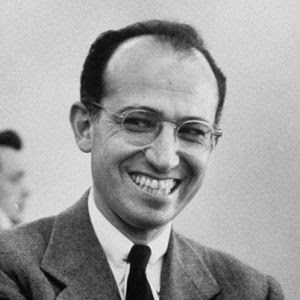A 12-year study published in the Monthly Notices of the Royal Astronomical Society has confirmed that our Milky Way Galaxy has four spiral arms, following years of debate that it has only two arms.
| Galactic distribution of massive young stars and compact and ultra-compact H II regions have luminosities greater than 10^4 times that of the Sun. The map shows the positions of the complexes and individual sources as red and blue circles, respectively. The sizes of the markers give an indication of their luminosity, as depicted in the upper-right corner. The position of the Sun is shown by the small circle above the Galactic Centre. The two solid lines enclose the Galactic Center region that was excluded from survey due to problems with source confusion and distance determination. The smaller of the two dot–dashed circles represents the locus of tangent points, while the larger circle shows the radius of the solar circle. Image credit: Urquhart JS et al / Robert Hurt, the Spitzer Science Center / Robert Benjamin. |
Supergiant nebulae
The most energetic H II regions within nearby galaxies have over 1,000 times more ionizations per second than does the Orion Nebula, too many to be provided by a single star. Indeed, there are clumps of ionized gas ionized by tight groupings of single stars that are embedded in rather diffuse material. These objects are more than 10 times as luminous as any in the Milky Way Galaxy and are about 200 light-years in diameter. If they were located at the Orion Nebula, they would cover the entire constellation of Orion with brightly glowing gas. These supergiant nebulae are more than 10 times as luminous as any in the Galaxy. The entire Local Group—the cluster of galaxies consisting of the Milky Way Galaxy, the great spiral galaxy in Andromeda, the smaller spiral in Triangulum, and more than 20 other stellar assemblages—contains but one supergiant nebula: the object called 30 Doradus, in the Large Magellanic Cloud. It contains a stellar cluster called R136, the source of most of the energy radiated by the nebula. This grouping consists of dozens of the most massive known stars of the Milky Way Galaxy, all packed into a volume only a thousandth of a typical stellar spacing in size. How such a cluster could form is a fascinating puzzle. There are other supergiant nebulae outside the Local Group, some of which radiate 10 times the energy of 30 Doradus.
In the 50s, astronomers used radio telescopes to map the Milky Way. Their observations focused on clouds of gas in the Galaxy in which new stars are born, revealing four major spiral arms.
In 2008, scientists using NASA’s Spitzer Space Telescope scoured our Galaxy for infrared light emitted by stars. They revealed about 110 million stars, but only evidence of two spiral arms.
The astronomers behind the new study used several radio telescopes to individually observe about 1,650 massive stars in the Galaxy. The distances and luminosities of these stars were calculated, revealing a distribution across four spiral arms.
“It isn’t a case of our results being right and those from Spitzer’s data being wrong – both surveys were looking for different things. Spitzer only sees much cooler, lower mass stars – stars like our Sun – which are much more numerous than the massive stars that we were targeting,” Prof Hoare said.
Massive stars are much less common than their lower mass counterparts because they only live for a short time – about 10 million years. The shorter lifetimes of massive stars means that they are only found in the arms in which they formed, which could explain the discrepancy in the number of galactic arms that different research teams have claimed.
“Lower mass stars live much longer than massive stars and rotate around our Galaxy many times, spreading out in the disc. The gravitational pull in the two stellar arms that Spitzer revealed is enough to pile up the majority of stars in those arms, but not in the other two. However, the gas is compressed enough in all four arms to lead to massive star formation,” Prof Hoare said.
“It’s exciting that we are able to use the distribution of young massive stars to probe the structure of the Milky Way and match the most intense region of star formation with a model with four spiral arms,” said lead author Dr James Urquhart of the Max Planck Institute for Radio Astronomy in Bonn, Germany.
References:
| (1) The Luminosity function and stellar evolution - Salpeter, Edwin E. Astrophys.J. 121 (1955) 161-167 |
| (2) Accretion in stellar clusters and the imf - Bonnell, I.A. et al. Mon.Not.Roy.Astron.Soc. 324 (2001) 573 astro-ph/0102121 |
| (3) The Stellar initial mass function - Scalo, J.M. Fund.Cosmic Phys. 11 (1986) 1-278 |
| (4) The Initial mass function and stellar birthrate in the solar neighborhood - Miller, G.E. et al. Astrophys.J.Suppl. 41 (1979) 513-547 |
| (5) On the Formation of Massive Stars - Bonnell, Ian A. et al. Mon.Not.Roy.Astron.Soc. 298 (1998) 93 astro-ph/9802332 |
(6) Urquhart JS et al. The RMS survey: galactic distribution of massive star formation. MNRAS 437 (2): 1791-1807; doi: 10.1093/mnras/stt2006

